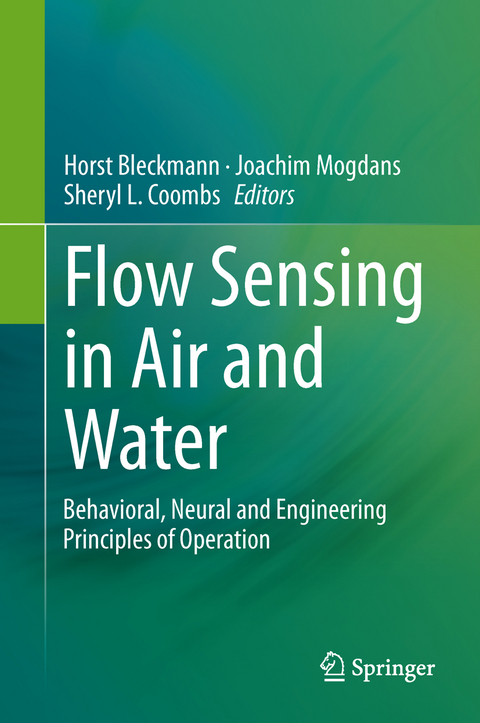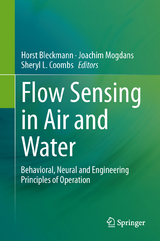Flow Sensing in Air and Water
Springer Berlin (Verlag)
978-3-642-41445-9 (ISBN)
In this book, leading scientists in the fields of sensory biology, neuroscience, physics and engineering explore the basic operational principles and behavioral uses of flow sensing in animals and how they might be applied to engineering applications such as autonomous control of underwater or aerial vehicles.
Although humans possess no flow-sensing abilities, countless aquatic (e.g. fish, cephalopods and seals), terrestrial (e.g. crickets and spiders) and aerial (e.g. bats) animals have flow sensing abilities that underlie remarkable behavioral feats. These include the ability to follow silent hydrodynamic trails long after the trailblazer has left the scene, to form hydrodynamic images of their environment in total darkness, and to swim or fly efficiently and effortlessly in the face of destabilizing currents and winds.
Part I: Spatio-Temporal Structure of Natural Aero- and Hydrodynamic Stimuli.- Natural Hydrodynamic Stimuli.- Laser-Based Optical Methods for the Sensory Ecology of Flow Sensing: From Classical PIV to Micro-PIV and Beyond.- Part II: Flow Sensing and Animal Behavior.- The Role of Flow and the Lateral Line in the Multisensory Guidance of Orienting Behaviours.- Hydrodynamic Perception in Seals and Sea Lions.- Hydrodynamic Imaging by Blind Mexican Cave Fish.- Flow Sensing in Sharks: Lateral Line Contributions to Navigation and Prey Capture.- The Slightest Whiff of Air: Airflow Sensing in Arthropods.- Air Flow Sensing by Bats.- Flies, Optic Flow and Multisensory Stabilization Reflexes.- Part III: Biomechanics of Flow Sensors.- Techniques for Studying Neuromast Function in Zebrafish.- Part IV: Evolution and Development of Flow Sensors.- Structural Diversity in the Lateral Line System of Fishes: Evolution, Development and Implications for Function.- Evolution of Polarized Hair Cells in Aquatic Vertebrates and Their Connection to Directionally Sensitive Neurons.- Patterning the Posterior Lateral Line in Teleosts: Evolution of Development.- Functional Architecture of Lateral Line Afferent Neurons in Larval Zebrafish.- Part V: Physiology of Flow Sensing.- Neuronal Basis of Source Localisation and the Processing of Bulk Water Flow with the Fish Lateral Line.- Hydrodynamic Object Formation: Perception, Neuronal Representation, and Multimodal Integration.- Part VI: Artificial Flow Sensors.- Crickets as Bio-Inspiration for MEMS-Based Flow-Sensing.- Complex Flow Detection by Fast Processing of Sensory Hair-Arrays.- Stress-Driven Artificial Hair Cell for Flow Sensing.- Snookie: an Autonomous Underwater Vehicle with Artificial Lateral-Line System.
| Erscheint lt. Verlag | 4.2.2014 |
|---|---|
| Zusatzinfo | XIII, 562 p. 200 illus., 77 illus. in color. |
| Verlagsort | Berlin |
| Sprache | englisch |
| Maße | 155 x 235 mm |
| Gewicht | 976 g |
| Themenwelt | Medizin / Pharmazie ► Studium |
| Naturwissenschaften ► Biologie ► Humanbiologie | |
| Naturwissenschaften ► Biologie ► Zoologie | |
| Naturwissenschaften ► Physik / Astronomie ► Angewandte Physik | |
| Schlagworte | Artificial flow sensors • Flow detection • Hydrodynamics • Lateral line • Trichobothria |
| ISBN-10 | 3-642-41445-1 / 3642414451 |
| ISBN-13 | 978-3-642-41445-9 / 9783642414459 |
| Zustand | Neuware |
| Haben Sie eine Frage zum Produkt? |
aus dem Bereich




